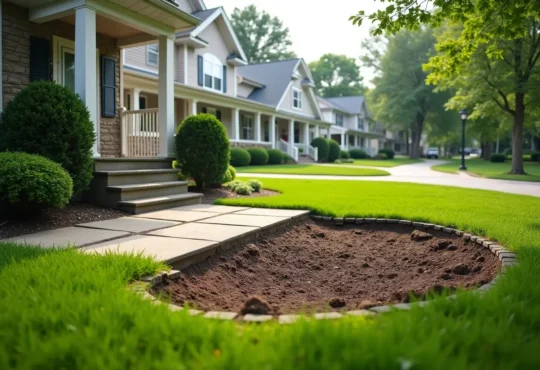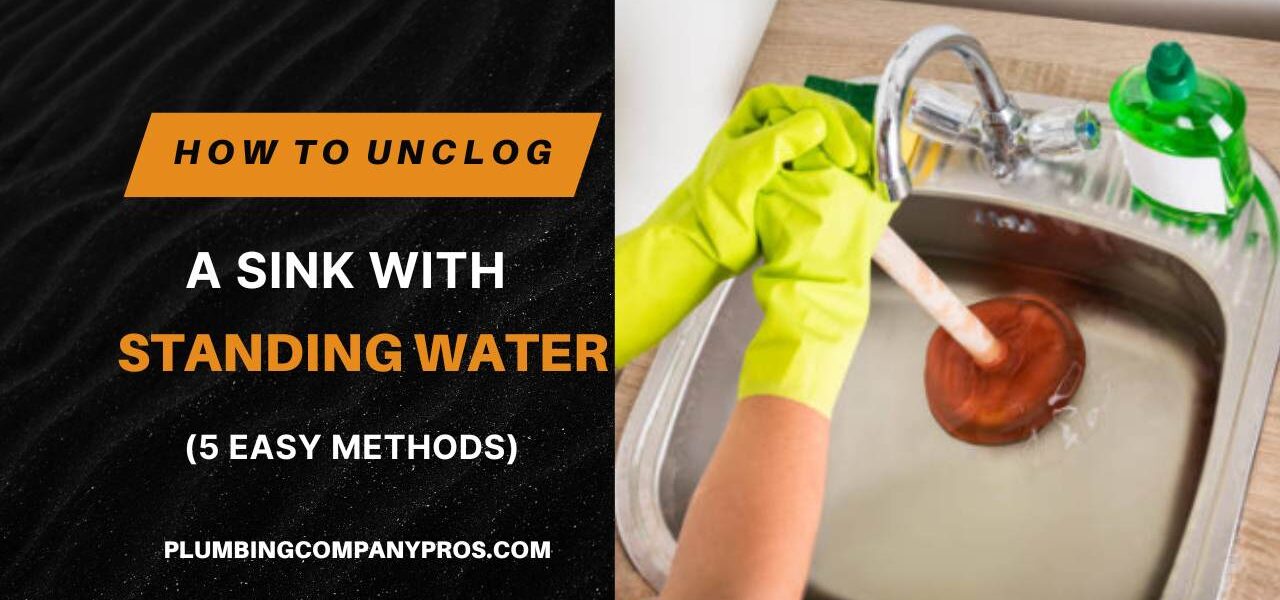
Unclog a Sink with Standing Water in 5 Easy Methods
Dealing with a clogged sink can be a real headache. Not only does it disrupt your daily routine, but it can also lead to unpleasant odors and potential water damage. Whether it’s caused by food particles, grease buildup, or some mysterious object blocking the drain, several effective DIY solutions are here to unclog a sink flowing freely again.
We’ll walk you through each method step-by-step from using a trusty plunger to a simple mix of baking soda and vinegar.
Contents
Understanding the Problem
Before diving into solutions, it’s essential to recognize the signs of a clogged sink. Common indicators include slow drainage, gurgling sounds, and of course, standing water that just won’t go away.
Standing water isn’t just annoying; it can also be a breeding ground for bacteria and mold. Additionally, if left unchecked, it can lead to more severe plumbing issues. Addressing the problem promptly can save you time and money in the long run.
Safety Precautions
Before starting any unclogging process, it’s crucial to protect yourself. Wear rubber gloves to avoid direct contact with dirty water and potential chemicals. Safety goggles are also a good idea to protect your eyes from splashes.
If you plan to use chemical drain cleaners, always read the labels and follow the instructions carefully. Use them in a well-ventilated area and never mix different chemicals as this can cause dangerous reactions.
Initial Preparations – Gathering Necessary Tools

To effectively unclog your sink, you’ll need some basic tools:
- Plunger
- Bucket
- Plumber’s snake
- Baking soda and vinegar
- Chemical drain cleaner (optional)
- Towels
Start by removing as much standing water as possible. You can use a bucket or a large cup to scoop out the water. This will make it easier to access the drain and apply the unclogging methods.
Method 1: How to Unclog a Bathroom Sink with Standing Water Using a Plunger
Not all plungers are created equal. For sinks, a cup plunger (the type with a flat rim) works best. Ensure the plunger is in good condition with no cracks.
- Seal the Sink Overflow: If your sink has an overflow hole, cover it with a wet cloth to create a better seal.
- Position the Plunger: Place the plunger over the drain, ensuring it covers the entire opening.
- Plunge Vigorously: Push down firmly and then pull up quickly, repeating this motion several times.
- Check the Drain: Remove the plunger and see if the water starts to drain. If not, repeat the process a few more times.
Method 2: Unclog a Sink with Boiling Water

Boiling water is effective for minor clogs caused by grease and soap scum. However, avoid using this method if you have PVC pipes as the heat can cause damage.
- Boil a Kettle of Water: Ensure the water is fully boiling.
- Pour Slowly: Carefully pour the boiling water directly into the drain in two to three stages, allowing a few seconds between each pour.
- Check the Drain: If the water drains slowly, repeat the process.
Method 3: Unclog a Sink with Baking Soda and Vinegar
The chemical reaction between baking soda and vinegar can help break down minor clogs. It’s also an eco-friendly solution.
- Pour Baking Soda: Pour one cup of baking soda down the drain.
- Add Vinegar: Follow with one cup of vinegar. You’ll see fizzing as the two react.
- Wait: Let the mixture sit for about 15 minutes.
- Flush with Hot Water: Finally, flush the drain with hot water to clear any remaining debris.
Method 4: Unclog a Sink with Plumber’s Snake
There are manual snakes and power snakes. For most home clogs, a manual hand-crank snake should suffice.
- Insert the Snake: Push the end of the snake into the drain until you feel resistance.
- Rotate the Handle: Turn the handle clockwise to break through the clog.
- Pull Out the Debris: Once you feel the clog loosen, slowly pull the snake out, bringing the debris with it.
- Flush the Drain: Run hot water to ensure the clog is completely cleared.
Method 5: Unclog a Sink with Chemical Drain Cleaners
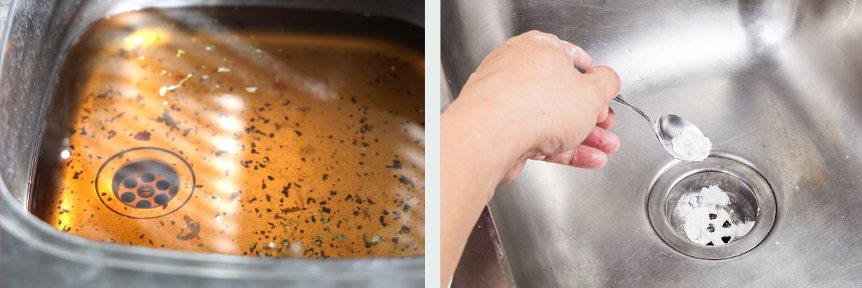
Chemical cleaners come in liquid, gel, and powder forms. They use strong chemicals to dissolve clogs, usually made of grease, hair, or soap scum.
While chemical cleaners can be effective, they should be used as a last resort due to their potential to damage pipes and harm the environment. Always follow the product’s instructions carefully.
Alternative Methods for Sink Drain
1. Dish Soap and Hot Water
This method can help with grease clogs. Pour a generous amount of dish soap down the drain followed by hot water. The soap can help break up grease, making it easier for the water to flush it away.
2. Using a Wet/Dry Vacuum
A wet/dry vacuum can be handy for stubborn clogs. Set it to vacuum liquids, create a tight seal over the drain, and let the vacuum suck out the clog.
How to Prevent Your Sink from Clogging?
- Run hot water: After each use, run hot water to keep oils in food products running down the drain.
- Use a drain cover: This can catch food particles and debris, preventing them from going down the drain.
- Monthly Cleaning: Use baking soda and vinegar or a mild drain cleaner once a month to prevent buildup.

Items to Avoid Putting Down the Sink
- Grease and oils
- Coffee grounds
- Eggshells
- Stringy vegetables (like celery)
- Non-food items
When to Call a Professional
- Persistent clogs despite multiple DIY attempts
- Foul odors that don’t go away
- Slow drains in multiple fixtures (may indicate a larger plumbing issue)
DIY vs Professional Help – Cost Comparison
DIY methods are usually cheaper but may not be as effective for severe clogs. Professional help can be more costly but offers a permanent solution.
Pros and Cons
- DIY: Cost-effective, immediate action, the satisfaction of fixing it yourself.
- Professional: Expertise, long-term solution, less risk of damage.
Conclusion
Unclogging a sink with standing water can be tackled in several ways, from simple plunging to using a plumber’s snake. While DIY methods are often sufficient, don’t hesitate to call a professional. Regular maintenance and being mindful of what goes down your drain can prevent future clogs.
People Also Ask (FAQs)
1. How often should I clean my sink drains?
It’s a good idea to clean your sink drains once a month using a mixture of baking soda and vinegar or a mild drain cleaner.
2. Can I use these methods for bathroom sinks too?
Yes, most of these methods suit kitchen and bathroom sinks.
3. Are chemical drain cleaners safe for all pipes?
Chemical drain cleaners can be harsh and may damage older or PVC pipes. Use them sparingly and consider other methods first.
4. What if none of these methods work?
If none of the DIY methods work, it’s best to call a professional plumber to avoid causing more damage.
5. How can I prevent my sink from clogging in the future?
Regular maintenance, using drain covers, and being mindful of what goes down the sink can help prevent clogs.


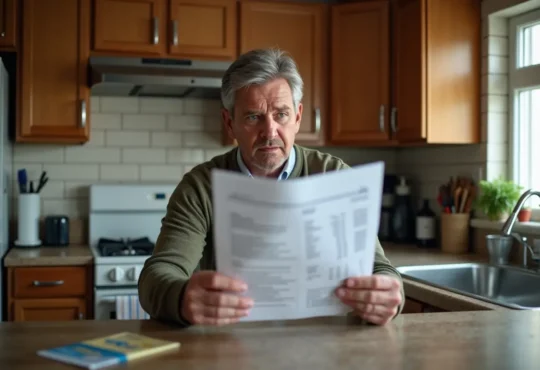

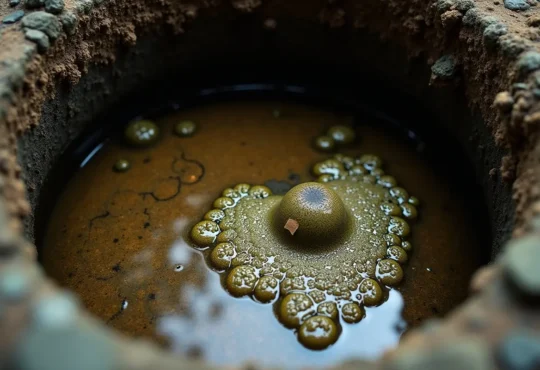
 Hi I'm Joe.
Hi I'm Joe. 